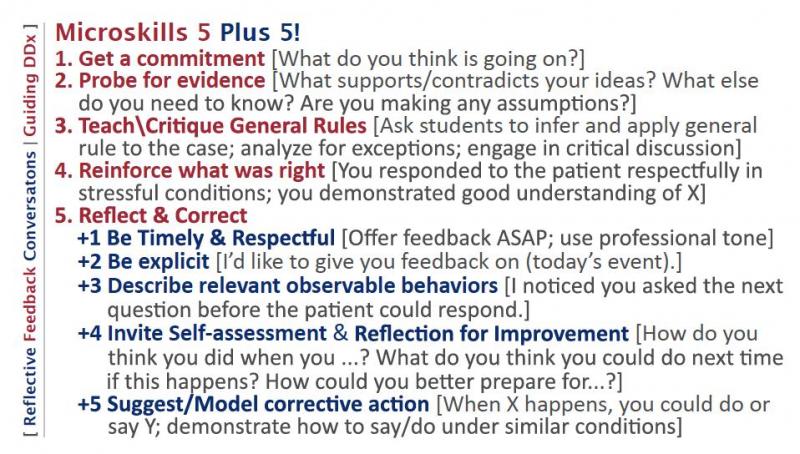Residents and other clinical eduators often have to teach while performing other tasks such as direct patient care, planning, or office management. Neher, et al. 1991 developed from observation and experience a structured approach to teaching clinicians how to teach, Microskills. The Microskills approach varies in its implementation at different institutions, but the components are much the same.
The original structure has 5 core phases: (1) Get a commitment; (2) Probe for supporting evidence; (3) Teach general rules; (4) Reinforce what was right; and (5) Correct mistakes (Neher et al. 1992; also, Neher & Stevens, 2003). A five-step “microksills” model of clinical teaching. Journal of American Board of Family Practice 5:419-424.. OMSE has adapted this structured approach to promote an emphasis on reflection for, in and on learning (Schön, 1983; Plack & Santasier, 2005) (see figure).
The second step, however, eliminates the word, supporting. Thus we ask students to Probe for Evidence, not only for supporting evidence. The reason: We encourage medical students to probe for evidence, whether it supports or does not support their theory or theories of the case. This requires the student to think more critically about their own thinking process and fosters a broader differential diagnosis.
References
-
Neher, J.O., K.C. Gordon, B. Meyer & N. Stevens (1992). A five-step “microksills” model of clinical teaching. Journal of American Board of Family Practice 5:419-424.
-
Neher JO, Stevens NG. (2003). The one-minute preceptor: shaping the teaching conversation. Fam Med 35(6):391-3.
Related Resources


